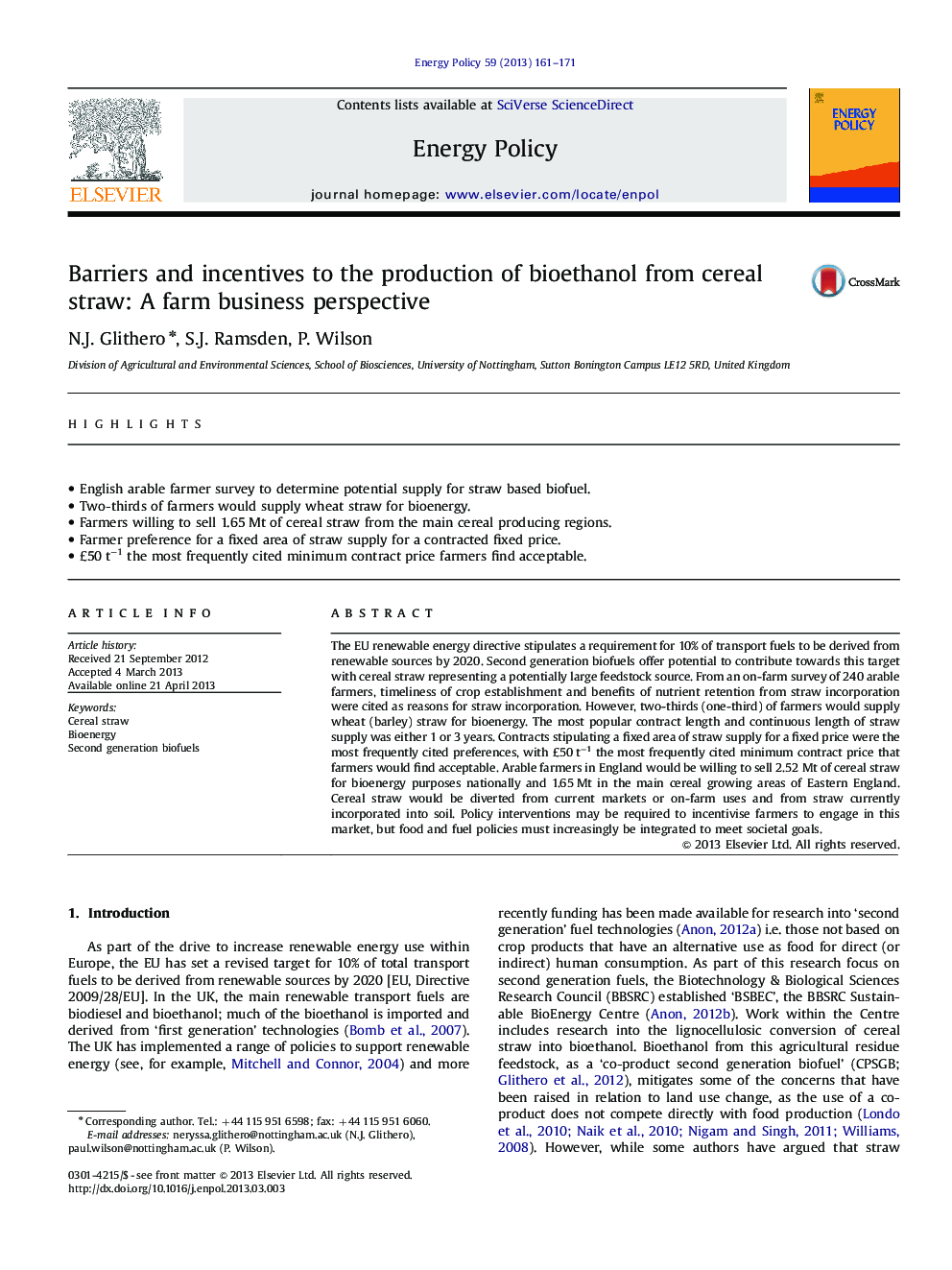| Article ID | Journal | Published Year | Pages | File Type |
|---|---|---|---|---|
| 7404203 | Energy Policy | 2013 | 11 Pages |
Abstract
The EU renewable energy directive stipulates a requirement for 10% of transport fuels to be derived from renewable sources by 2020. Second generation biofuels offer potential to contribute towards this target with cereal straw representing a potentially large feedstock source. From an on-farm survey of 240 arable farmers, timeliness of crop establishment and benefits of nutrient retention from straw incorporation were cited as reasons for straw incorporation. However, two-thirds (one-third) of farmers would supply wheat (barley) straw for bioenergy. The most popular contract length and continuous length of straw supply was either 1 or 3 years. Contracts stipulating a fixed area of straw supply for a fixed price were the most frequently cited preferences, with £50 tâ1 the most frequently cited minimum contract price that farmers would find acceptable. Arable farmers in England would be willing to sell 2.52 Mt of cereal straw for bioenergy purposes nationally and 1.65 Mt in the main cereal growing areas of Eastern England. Cereal straw would be diverted from current markets or on-farm uses and from straw currently incorporated into soil. Policy interventions may be required to incentivise farmers to engage in this market, but food and fuel policies must increasingly be integrated to meet societal goals.
Related Topics
Physical Sciences and Engineering
Energy
Energy Engineering and Power Technology
Authors
N.J. Glithero, S.J. Ramsden, P. Wilson,
